Big and Small Size Dongtian Scenic Spot
The Size Dongtian Scenic Area (formerly known as the Haishan Scenic Spot and Aoshan Scenic Spot) is located in the southern corner of Nanshan Province, 40 kilometers west of Sanya City, with a total area of 22.5 square kilometers. It has a history of more than 800 years. It is a famous Taoist cultural scenic spot.
The large and small Dongtian Scenic Area is known as the first scenic spot of Qiongya with its beautiful seascape, mountain scenery and stone scenery. In the scenic spot, there are still "Xiaodong Tian", "Diaotai", "Haishan Wonder", "Immortal Foot", "Trial Jianfeng" and other cliff inscriptions of poetry and prose of successive dynasties. Mountains, seas and forest springs are indispensable conditions for forming a tourist attraction. Here, Yazhou Bay arc strings a hundred miles, Bibo Wanqin; Aoshan deep clouds and green forests, rocky caves; the coast is full of artistic ghosts and axes, Xiao shape objects of the size of Lei group; between the mountains and the sea like a simple and magnificent long scroll painting.
Main attractions
In the scenic spot, there are still "Xiaodong Tian", "Diaotai", "Haishan Wonder", "Immortal Foot", "Trial Jianfeng" and other cliff inscriptions of poetry and prose of successive dynasties.
Fairy stone
The word "Shou" is written by Chen Xuan. It is 2.15 meters high. Chen Xuan, the character Tunan, the self-named Fuyaozi, is a famous immortal Taoist priest in the history of Taoism in Anhui Province. It is also called "Chen Xuan's ancestor" in history. There are works such as Wuji Tu, Congenital Tu and Zhixuan Pian, which have great influence on the Northern Song Dynasty. Chen Yuanshan's five-foot-long character is composed of four characters: human, longevity, year and abundance. Here we stand. It means longevity is better than Nanshan.
Yan Zhan Ting
Yanzhan Pavilion was first built in Chunyou, Southern Song Dynasty. It was destroyed in the early Qing Dynasty and rebuilt in the spring of 1993. Night landing, looking forward to the rocky shore, Xiaoyue Shitao, there is no cave sky.
Seamount wonders
During Song Chunyou's reign (1247 A.D.), Mao Kui's bureaucrat in the county was visited several times in the Aoshan Mountains, and he was given a huge stone, such as a house, looking at the sea in front, a winding lane in back, and a great view of the seamounts on the rocks. There are stone carvings of Mao Kui and scholars of all dynasties before and after the boulders. "Haiguang Changwei, the mountain is clearer and more beautiful" came from Mao Kui's "Little Cave Poetry".
Qundiao
Jianzhen (688 - 763 AD), a native of Yangzhou, was named Chunyu, a prominent monk in Tang Dynasty. In the first year of Tang Tianbao (742 AD), at the invitation of the Emperor of Japan, he traveled to Japan six times and failed the first five times. In June of the 7th year of Tianbao (748 A.D.), 35 people, including Jianzhen Master and apprentices, landed in Ningyuan Estuary (today's Xiaodongtian Scenic Area) of Zhenzhou (Sanya City) after a hurricane struck Yangzhou on their fifth voyage across the sea. Living in Zhenzhou for one year, Dayun Temple was built to spread Buddhist culture. Jianzhen's determination to go to Japan to promote Buddhism remained unchanged. At last, he made six successful eastward journeys in Tianbao's twelve years (A.D. 753). In the past ten years, Japan has made outstanding contributions to the promotion of cultural exchanges between China and Japan and the development of friendship between the two peoples. In commemoration of this historic feat, this giant group sculpture has been specially built.
The fifth landing of Jianzhen's drifting boat shows their indomitable will, confidence in victory and joy for the rest of their lives. On May 8, 2007, Nanshan Dongtian Tourist Area of Sanya City was officially approved by the National Tourism Administration as a national 5A tourist attraction.
When all is said and done
The Jiuyi scenic spot is composed of nine big stone turtles and one small stone turtle. It is built to commemorate the return of Macao on December 20, 1999. It means family reunion. It is happy and harmonious. The "turtle" symbolizes longevity in Taoist culture. Here it takes the homonym of "turtle".
Blessed spot
Since the Tang and Song Dynasties, the small and large caves in Nanshan have been famous for their immortal caves. They are comparable to the legendary three immortal islands in the East China Sea, Penglai, Yingzhou and abbot. They are known as the immortal islands in the South China Sea and have attracted many people who seek immortal ways. According to historical records, Bai Yuchan, the famous immortal Taoist priest of the Song Dynasty and the five ancestors of the Southern Zong, returned to this place because of the exquisite beauty of the Hinan Mountains, built Taoist outlook and disseminated Taoist cultural and philosophical thoughts. Nowadays, there are many historical relics such as "the Temple of Fairy" and "the Foot of Fairy" in the scenic area, as well as many travel poems and essays. During the Chunyou period of Southern Song Dynasty, Mao Kui, a county guardian, took office here. He was thriving and loving for mountains and rivers because of his nature. He visited the Nanshan Mountains frequently and found big and small caves in the sky successively. One by one, this scenic spot was developed, leaving stone inscriptions such as "Diary of the Big and Small Caves". The Taoist school has the saying that there are 10 big cave days, 36 small cave days and 72 happy places. Nowadays, there is a "small cave sky" under the huge cliff near the sea in the scenic spot, and there is an ancient fishing platform. According to the Records of Yazhou, there is also a "big cave sky", which is surrounded by stone tables, benches and streams. It is like a fairyland and has been visited by some people, but nowadays no one has found it, full of mystery. What is more mysterious is that Mao Quinn, the county guardian, made great contributions in exploiting the caves of Nanshan. When he took office, Dunshi Chengdao and his followers flew away. Later generations, because of their admiration for their immortal wind, built Mao Zhijun Temple in Nanshan preserve and offered sacrifices.
Seamount wonders
Mountains, seas and forest springs are indispensable conditions for forming a tourist attraction. Here, Yazhou Bay arc strings a hundred miles, Bibo Wanqin; Aoshan deep clouds and green forests, rocky caves; the coast is full of artistic ghosts and axes, Xiao shape objects of the size of Lei group; between the mountains and the sea like a simple and magnificent long scroll painting. Since the Song Dynasty, Zhou Kang and Mao Kui, the prefectures of the Song Dynasty, started their journey one after another, there have been many sages and eminent scholars who visited and wrote magnificent poems and essays on it. In 1962, Guo Moruo visited "Nanshan cave sky with big and small", and praised the scenery of the scenic spot. He was praised as "Nanming Qidian" in his poem "Aoshan Mountain in Yaya County" on April 17, 1993. When General Secretary Jiang Zemin visited Nanshan cave sky with great interest, he inscribed in the scenic spot "The blue sea is far away, and Qiongya is full of spring".
Fu Shou Nan Shan
Nanshan is an auspicious mountain. In the eyes of the people, Nanshan is closely related to longevity. It is Shoushan in the true sense. There are many places called Nanshan in China, such as Chaozhou in Guangdong, Putian in Fujian, Dazu in Sichuan and Xi'an in Shaanxi. The most famous Nanshan Mountain is located in the East Capital of Qinghai Province. It can be found in the Dictionary of Famous Mountains and Dachuan in China (Shandong Education Press, 1992). But the Nanshan Mountain where the big and small caves are located is very unique. First, it is the southernmost mountain in China, which is worthy of its name and is well-known. Second, the small and large caves in the Nanshan Mountain are regarded as the "heaven and earth of caves" in the South China Sea. Dongtian Fudi is a place where Taoists live in seclusion and practice immortality, and where immortals and real people live. It is also an ideal place for longevity. Thirdly, the results of the third and fourth census in China show that Hainan has the highest average life expectancy, while Sanya has the highest average life expectancy in Hainan and Nanshan is the highest in Sanya. There are hundreds of people over the age of 86, which shows that this is a real land of happiness and longevity. Fourthly, there are longevity trees that can survive thousands of years in the area of Nanshan caves and heavens, which are known as "the old pine trees in Nanshan". Dracaena is an evergreen plant of Agavenaceae. The Cretaceous dinosaur era has emerged, known as the living fossil in plants, and the World Organization for Science, Education and Culture (UNESCO) is listed as a protected tree species. China also designates it as a rare and endangered plant, which belongs to the second-class national key protected tree species, mainly distributed in tropical and subtropical Xuan area. Nowadays, this species is on the verge of extinction, but there are more than 30,000 trees growing in the Nanshan area of Sanya, mainly concentrated in the Dongtian tourist area of Nanshan, the size of Dongtian tourist area. There are more than 2,000 trees over a thousand years old, and the longest one is more than 6,000 years old. Fuze land, nurturing thousands of ancient trees; Shenzu Mountain, Xin-Wangu elves. There are enough reasons to believe that Nanshan is the home of longevity, "Shoubi Nanshan" deserves it here. "Shoubi Nanshan is not old pine" is the true portrayal of this scenic spot.
Historical culture
Located 40 kilometers west of Sanya City, the southernmost Taoist cultural tourist resort in China is the longest historical scenic spot in Hainan Province. The large and small Dongtian Scenic Area is known as the first scenic spot of Qiongya with its beautiful seascape, mountain scenery and stone scenery. In 1962, Guo Moruo visited "Big and Small Dongtian" and praised the scenery of the scenic spot. He was praised as "Nanming Qidian" in his poem "Aoshan Mountain in Yaxian County". In addition to "Xiaodongtian", "Diaotai", "Haishan Miracle", "Immortal Foot", "Trial Jianfeng" and other ancient poems and inscriptions on cliffs, there are also such landscapes as Dragon King of the South China Sea, Xiaodongtian, Millennium Old Pine, Shenao of the South China Sea, which has been called "Haishan Miracle" since ancient times.
Tourism information
Reach the scenic spot
No. 25 Xinguo Tourist Bus or No. 29 Bus, stop at "Big and Small Dongtian".
Internal traffic in scenic spots
Battery cars are optional for easy sightseeing. There are two bus routes to choose from. No matter which route you choose, it won't affect your photography and sightseeing.
On the way, staff will explain the culture of the scenic spots and the location of the main scenic spots along the way. The 6-kilometer journey between scenic spots is a little time-saving and energy-saving. Battery tickets in scenic spots are one-ticket system with 15 yuan per person, no one-way or two-way trip.
The first route is the uphill route: from Coconut Forest Bar to the end of Xuanmiao Pavilion of Half Hillside Sea Viewing Platform, and then continue to walk around all the scenic spots on the hill and the seaside, and return by bus at the designated bus stop.
The second route is the seaside route: from Coconut Forest Bar to Xiaoyuewan Terminal, the farthest scenic spot, and then go back to see all the scenic spots on the seaside and on the mountain, and return by bus at the designated bus stop.
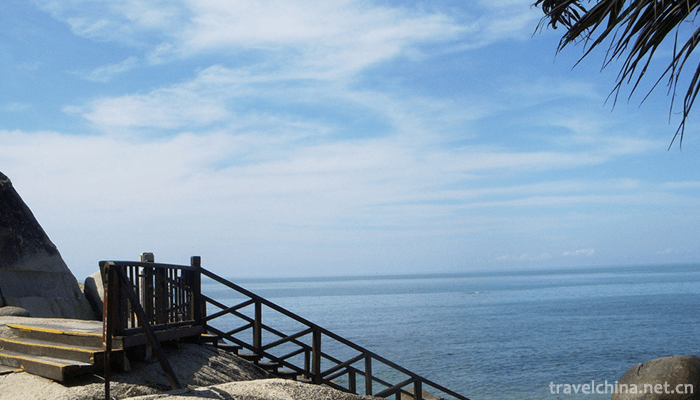
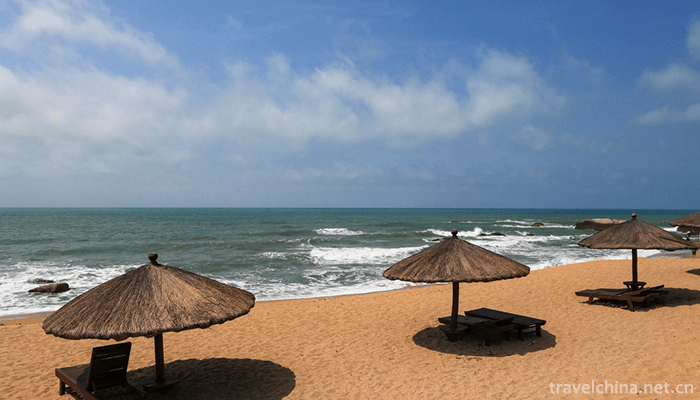
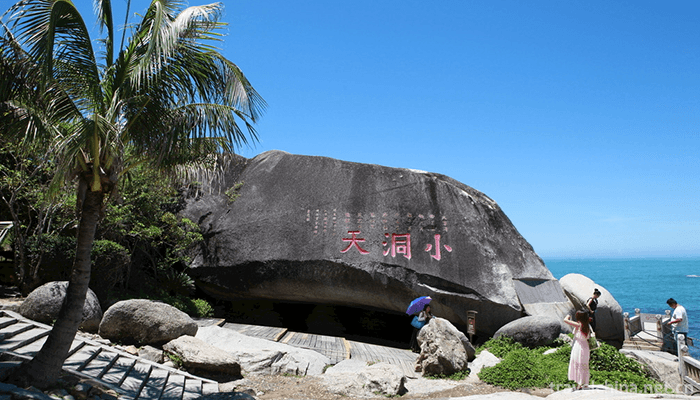
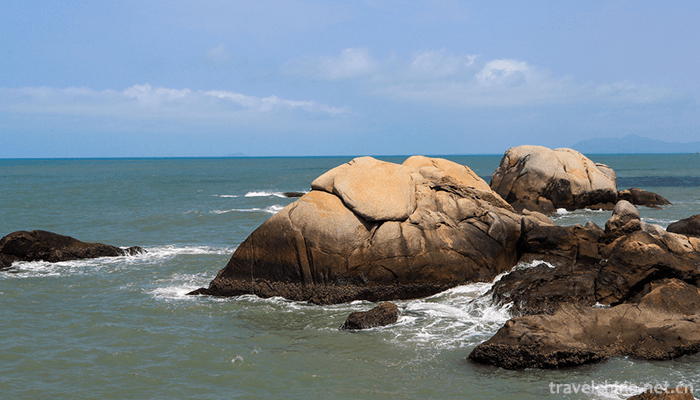
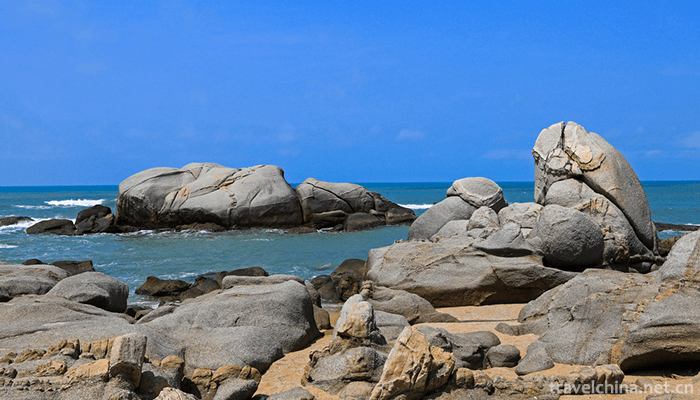

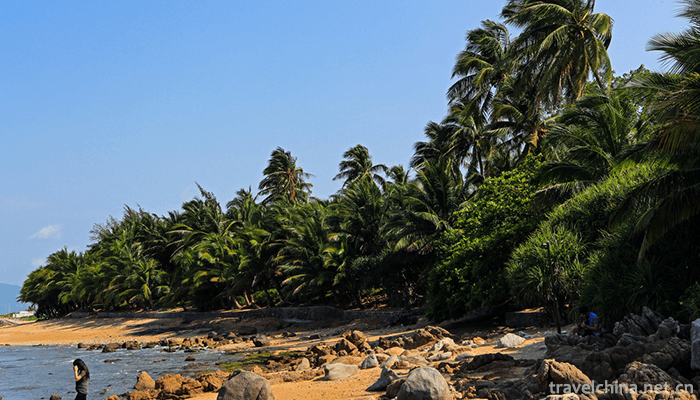
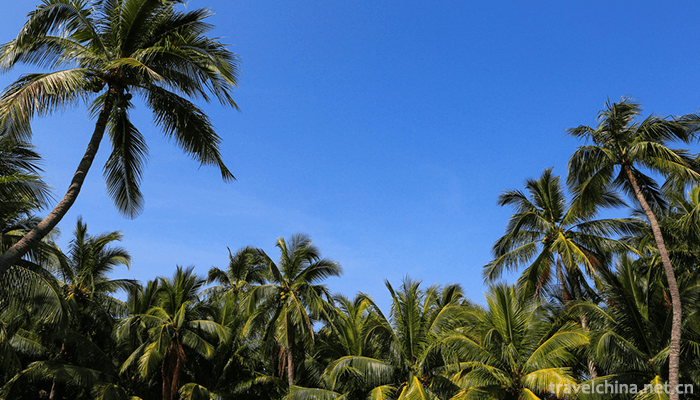
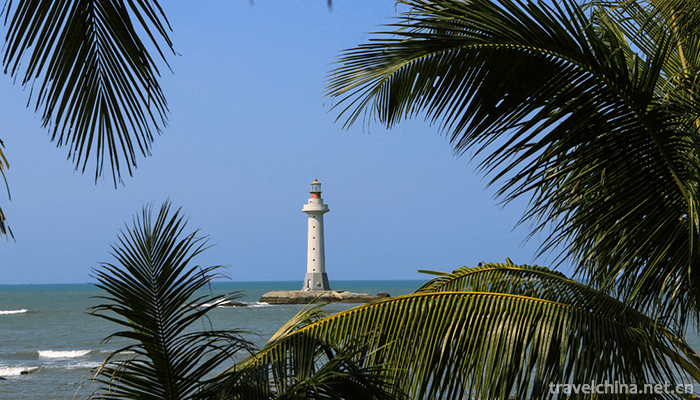
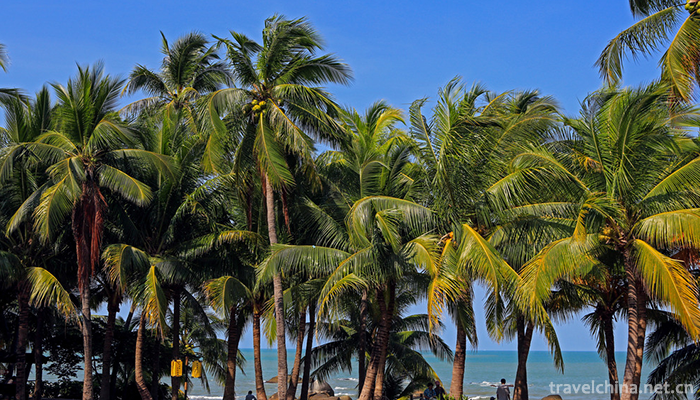
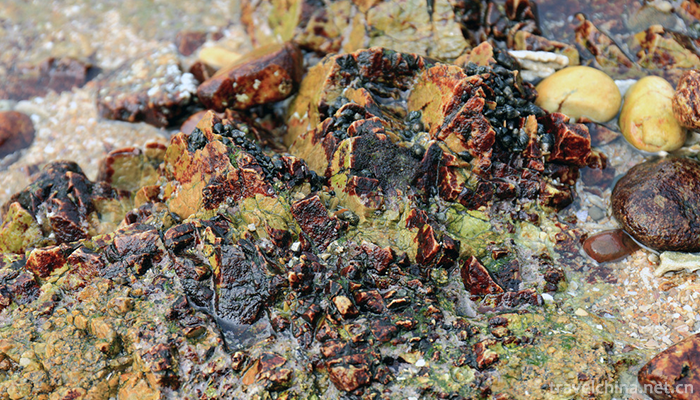

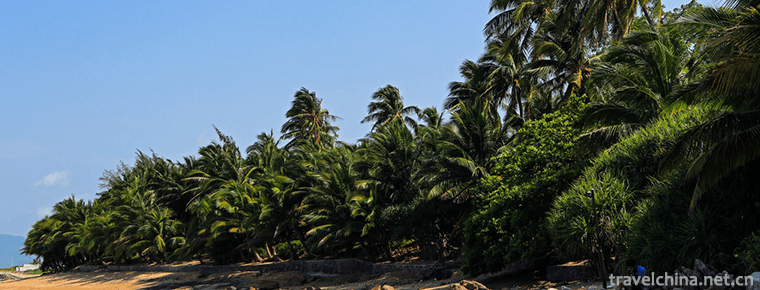
-
1.KangrinboqeMount KailashTime 2018-10-12
-
2.Karamay River Scenic Area
The Karamay River, also known as the Chuancheng River, originates from Jiulongtan in the northeast of the city. It zigzags through the Xiyuetan Reservoir (also known as Aikule)
Time 2018-12-23 -
3.Strange slope Scenic Area
Weipo Scenic Spot is located at the foot of Maoshan Mountain in Qingshuitai Town, Xinchengzi District, Shenyang City, Liaoning Province, facing the wilderness, backed by mountains
Time 2019-01-12 -
4.Bao en Temple Pingwu
Pingwu Baoen Temple is located in Pingwu County, Sichuan Province. It is 184 kilometers away from Mianyang City and 300 kilometers away from Chengdu. Located in the northeast corner of the county town
Time 2019-02-07 -
5.Wuzhizhou Island Scenic Area
Wuzhizhou Island is situated in Haitangwan Bay in the north of Sanya City. It is opposite to Monkey Island in the South and is adjacent to Yalong Bay
Time 2019-02-24 -
6.Traditional Sugar making Techniques
In the memory of many Wenzhou people, when they were young, they were short of doctors and medicines, but the old people had many earthen prescriptions which were very useful.
Time 2019-04-21 -
7.Production Techniques of Mongolian Lele Car
Lele cart is a cattle cart in Mongolian area, also known as roller cart. Its origin can be traced back to the "Yuan Yuan" recorded in Han Shu. As far back as the Qin and Han Dynasties, the H
Time 2019-06-03 -
8.Miao Jia Li
Jiali, Miao is called "jaxlil". In the context of Miao language, "Jiali" is a synthesis of the semantics of "philosophy", "truth", "reason" and "
Time 2019-06-05 -
9.Manufacturing Techniques of Wanan Compass
Wan'an compass making technology, the local traditional handicraft in Xiuning County, Anhui Province, is one of the national intangible cultural heritage.
Time 2019-06-26 -
10.Chinese Fashion Making Skills
Chinese style clothing (dragon and Phoenix cheongsam) originated from the late Qing and Qianlong dynasties, and is the inheritor of the Shanghai style cheongsam. Hengsheng's suit, which originated in
Time 2019-08-03 -
11.Cheongsam Qipao anecdotes
Helen foster snow is the widow of snow, the author of a journey to the West. This book records his meeting with Mao Zedong in Yan'an cave dwelling period. Helen was only 23 when she first went to Shanghai in 1931. Helen's good friend Polly went all over the United States to
Time 2020-12-11 -
12.Introduction to Chinese embroidery
Embroidery, known as needle embroidery in ancient times, is a kind of technology that uses embroidery needle to guide color thread, embroiders the designed patterns on textiles, and forms patterns with embroidery traces. In ancient times, it was called "Juju" and "pinju".
Time 2020-12-12